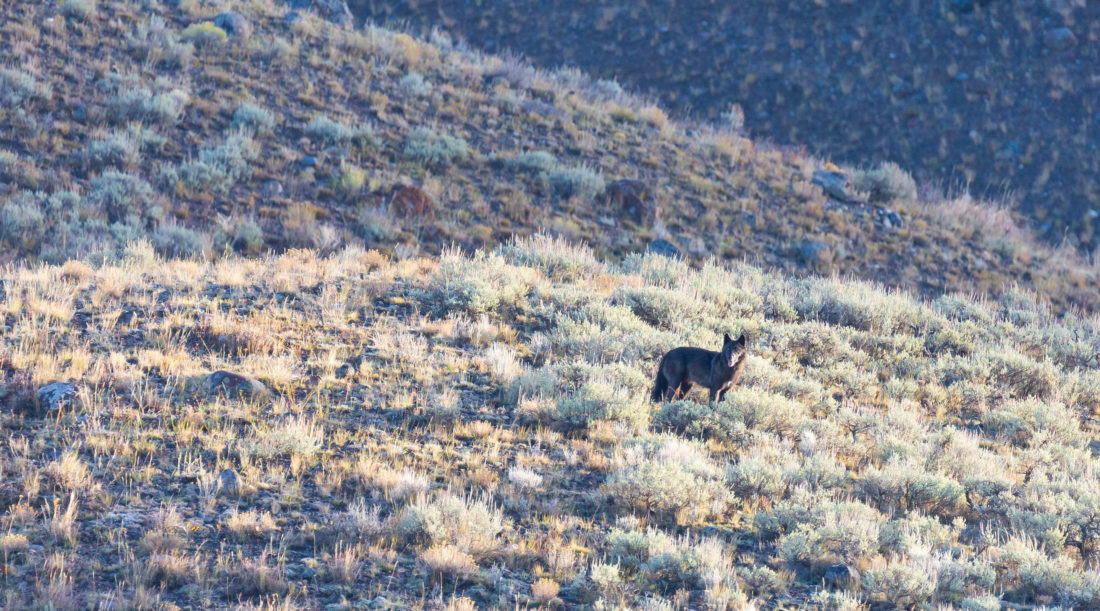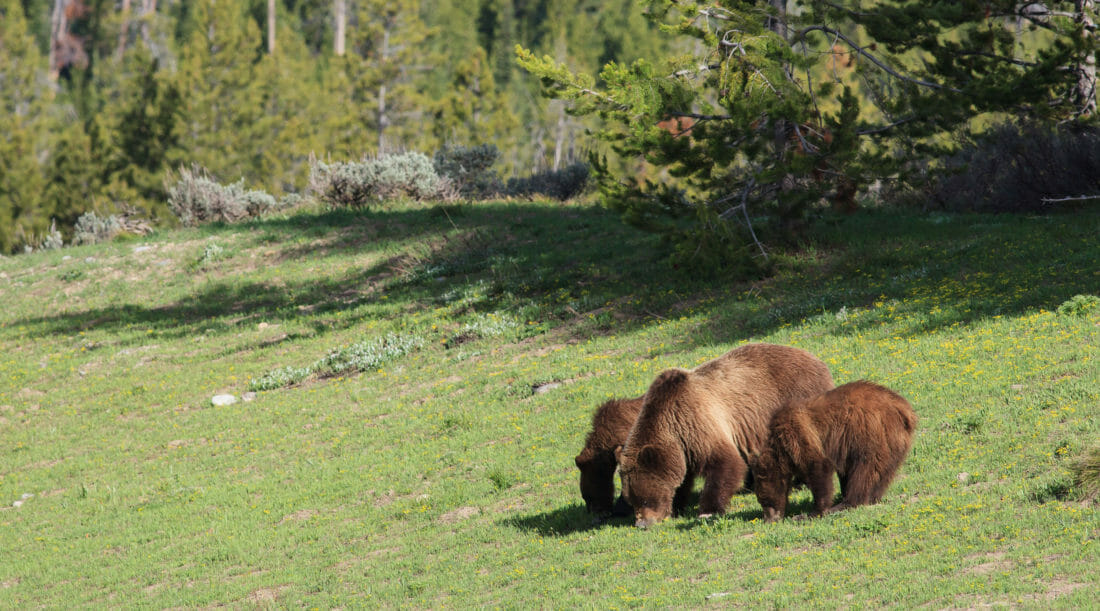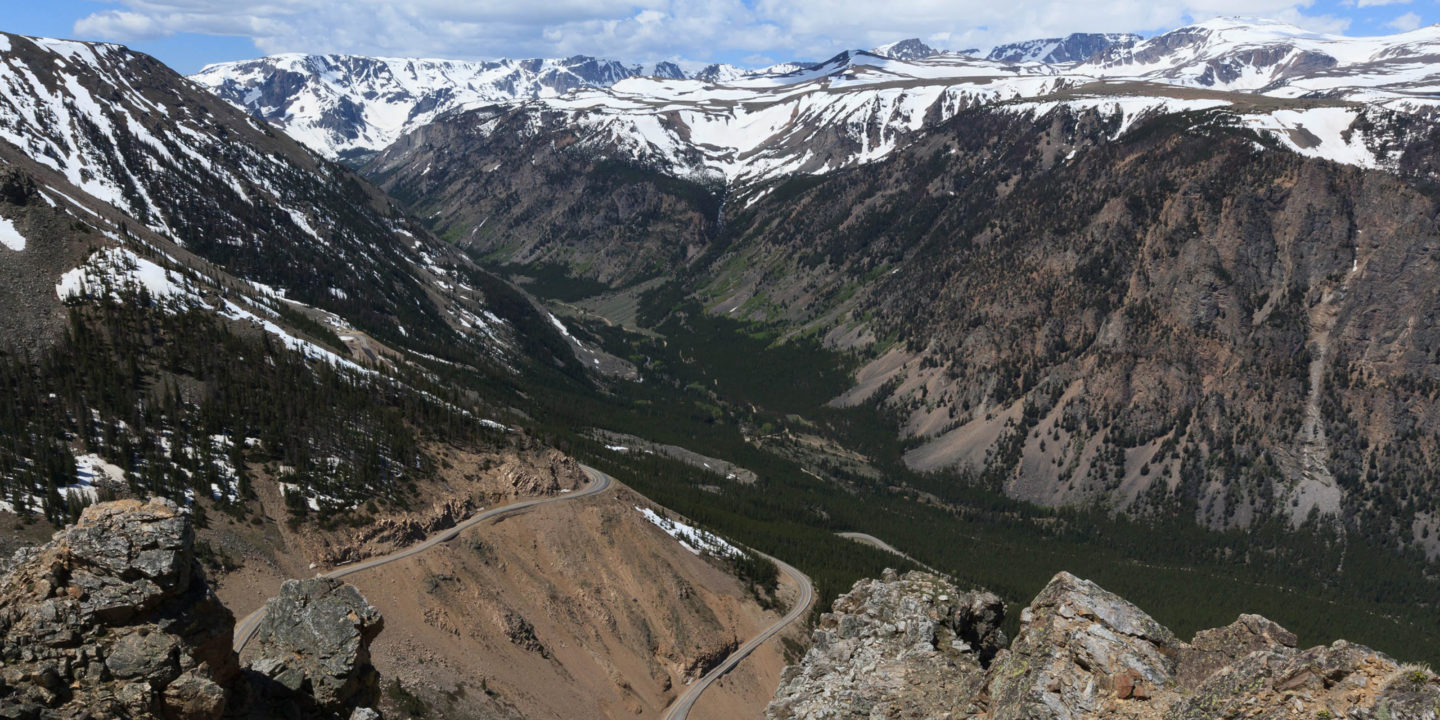Dunraven Pass
Visible from the Lamar Valley is one of the highest spots you can drive to in Yellowstone National Park, known as Dunraven Pass. The highest point along this drive is 8,859 feet above sea level, and if you are feeling adventurous there is a trail from the roadway that will take you up to the top of Mt. Washburn, and a whopping 10,243 feet in elevation. Geologists believe this mountain range formed from volcanic activity that may have occurred as long as 50 million years ago, long before the more recent formation of the Yellowstone Caldera which was a mere 640,000 years ago.
The peaks from past lava flows found in the Washburn Range consist of more nutrients than the more recent eruptions, which produced a nutrient poor type of rock called rhyolite. Areas with rhyolite primarily support the growth of trees like the lodgepole pine, which is adapted to dryer soil and has a shallower root system so it can focus on the more nutrient rich dirt near the surface. Dunraven Pass in contrast supports the growth of another type of pine- the whitebark pine. This pine primarily grows at elevations above 8,000 feet in Yellowstone, and is pickier about its soil quality than the lodgepole.

Clark’s Nutcracker
The whitebark pine is important to consider when looking for wildlife because it produces a nutritious seed which a large variety of birds and mammals will feed on. The Clark’s nutcracker is a wonderful example of this, in fact the whitebark pine nearly depends on this bird to pluck the pine nuts from its pine cones and redistribute those seeds across the landscape. Similar to the squirrels that also collect and feed on the pine nuts, the Clark’s nutcracker will cache those seeds and often forget where many of them were buried. This results in potentially hundreds of whitebark pines being reseeded by a single Clark’s nutcracker.
Red Squirrel
The red squirrel is another common pine nut cacher. Instead of burying singular pine nuts, the squirrels will typically collect larger quantities of the seed and bury them in middens. Red squirrels do this intending to return to their midden next spring after waking up from hibernation so they have something easier to find to eat. The plan is overall foolproof, with the exception that grizzly bears also love to eat those pine nuts. Since it is difficult for an animal as large as a grizzly bear to climb a whitebark pine and harvest the nuts itself, the grizzlies will instead sniff out red squirrel middens in the spring and dig those up instead. Some grizzlies have been known to smell a pine nut cache in as deep as six feet of snow!

Army Cutworm Moth and Grizzly Bear
Since the soil around Dunraven Pass is more nutritious, more wildflowers and berry shrubs grow in that area as well. The presence of a variety of flowers will attract an animal you may not be interested in seeing, the army cutworm moth. This insect feeds on the nectar of wildflowers in the evening and will find nearby rocky hillsides of loose rock, known as talus slopes, to sleep under in the day. Seeking out these talus slopes can actually be a wonderful way to find grizzly bears. In the summer these bears will travel into high elevation areas where tens of thousands of these moths will be hiding under rocks sleeping, and flip over said rocks to slurp up as many moths as they possibly can. One grizzly could potentially consume as much as 40,000 moths in a day! This is a vital source of food for the Grizzly Bear in late summer, when vegetation begins to dry out and easier sources of protein like an elk calf learns how to run fast enough to stay out of the reach of predators.
As Fall approaches both grizzly and black bear enter into a period of hyperphagia, which is when their body begins to send out signals that it is essentially starving. This drives the bear to eat even more voraciously, potentially putting on 2-3lbs in one day, which is all in preparation for hibernation. Fortunately in the Fall an ample variety of berry shrubs ripen up, some being the western serviceberry, chokecherry and hawthorn berry. Areas around Mt. Washburn near water, such as Tower Falls, will support the growth of these berry shrubs and can be a fruitful spot to seek out more bears.

Bighorn Sheep
Another animal that benefits from the more nutritious soil and therefore diverse plant community atop Mt. Washburn is the bighorn sheep. As mentioned previously, you can try spotting bighorn sheep by searching the eastern cliff sides of Mt. Washburn from the Lamar Valley, but if you want to try and get a closer look at one you might have luck in the summer seeing them alongside Dunraven Pass. The more nutrient rich soil supports the growth of grasses that the sheep will feed on throughout June and July. The bighorn sheep ram is an impressive sight to behold, they have the largest horns of any animal in the park, potentially weighing as much as 40lbs. Do not expect to witness much head ramming between these males however, the bighorn sheep breeding season does not begin until November, and by that time the sheep will have begun their migration into the Mt. Everts area of Yellowstone.


